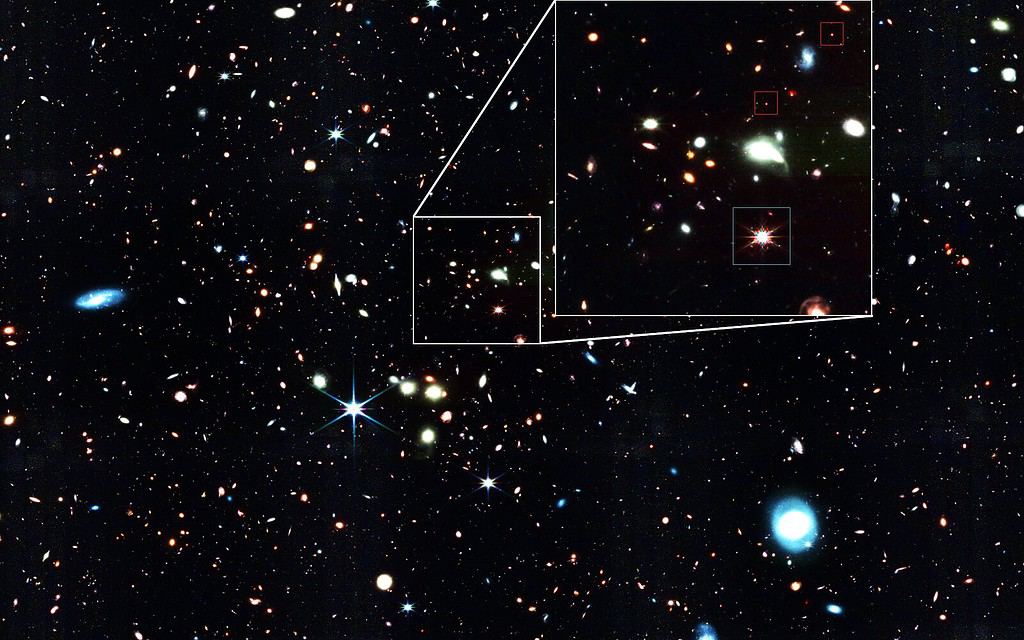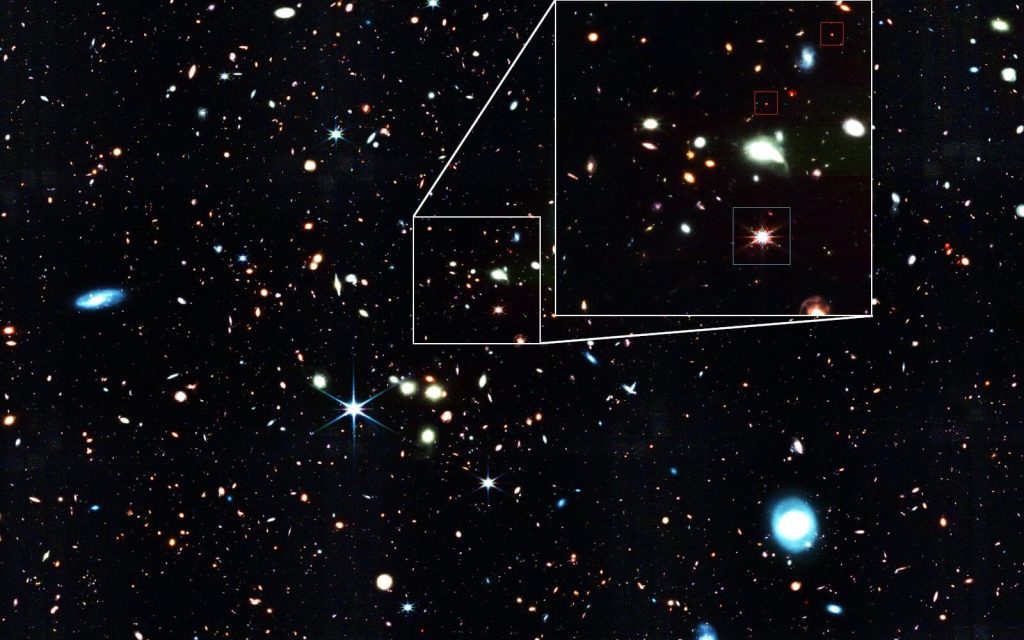
Certain things are not easily noticed. The James Webb Space Telescope (JWST) made a new finding that was published in The Astrophysical Journal regarding a surprising amount of small faint red spots observed in a distant area of space. Despite appearing unremarkable, this discovery has the potential to alter our comprehension of how supermassive black holes originated.
During its initial year of operation, the JWST detected these faint red spots in the far past of the universe, at a redshift of around z ∼ 5 (the z-score indicates the number of standard deviations a data point is above or below the average). Light at a redshift of z ∼ 5 originates from a time roughly one billion years after the Big Bang. Thus, this observation provides a rare glimpse into the early universe and offers hints about how galaxies formed and evolved.
Unlike anything observed by its predecessor, the Hubble Space Telescope, these entities previously appeared identical to regular galaxies. The JWST's advanced infrared capabilities have revealed that these spots are actually miniature versions of very massive black holes.
“Even though it wasn't specifically designed for this purpose, the JWST has helped us determine that these faint red spots—at a great distance in the early universe—are small versions of extremely massive black holes,” explained Jorryt Matthee, a professor of astrophysics at the Institute of Science and Technology Austria.
“These unique entities could transform our understanding of the origin of black holes.”
Why It's Important
Supermassive black holes (SMBH) are located at the center of nearly every large galaxy, including our own Milky Way. These cosmic occurrences have masses ranging from millions to billions of times that of our Sun and have a significant influence on shaping the galaxies they exist in. The discovery of these small red spots implies the presence of supermassive black holes in the early universe, challenging current theories about how such immense objects could have formed and spread.
Some SMBHs grow by consuming massive amounts of matter. Consequently, they become so bright that they can be observed from the edge of the ever-expanding universe. These bright SMBHs are known as quasars and are among the most luminous objects in the universe.
One of the most challenging mysteries in astronomy is how certain SMBHs grew to such enormous sizes so rapidly. Existing laws of physics and our knowledge of stellar explosions indicate a maximum growth rate for black holes. However, the existence of these cosmic behemoths challenges these limits and raises questions about our fundamental understanding of cosmic development.
“One problem with quasars is that some of them seem overly massive, too massive given the age of the universe at which they are observed. We refer to them as the ‘problematic quasars’,” Matthee stated. “If we take into account that quasars arise from massive star explosions and that we know their maximum growth rate based on the general laws of physics, some of them appear to have grown faster than what should be possible. It's like seeing a five-year-old child who is two meters tall. Something doesn’t quite add up.”
The small red spots discovered by the JWST are basically young quasars. Unlike most quasars, which are extremely large and bright, these young quasars are smaller, with masses ranging from 10 to 100 million solar masses solar masses and appear red because of dust obscuring them. This finding gives us a new way of looking at the life cycle of quasars and supermassive black holes. It provides us with information about their growth and the stages before they become the giants we see today.
The detection of these young quasars was made possible by the JWST EIGER (Emission-line galaxies and Intergalactic Gas at the Epoch of Reionization) and FRESCO (First Reionization Epoch Spectroscopically Complete Observations) collaborations. These projects were initially meant to study the rare blue supermassive quasars and their surroundings.
This discovery has created new opportunities for research and raised important questions about the early days of the universe.
“Black holes and SMBHs are perhaps the most fascinating things in the universe,” Matthee said. “It's difficult to explain why they exist, but they do. We hope that this work will help us uncover one of the biggest mysteries about the universe.”









